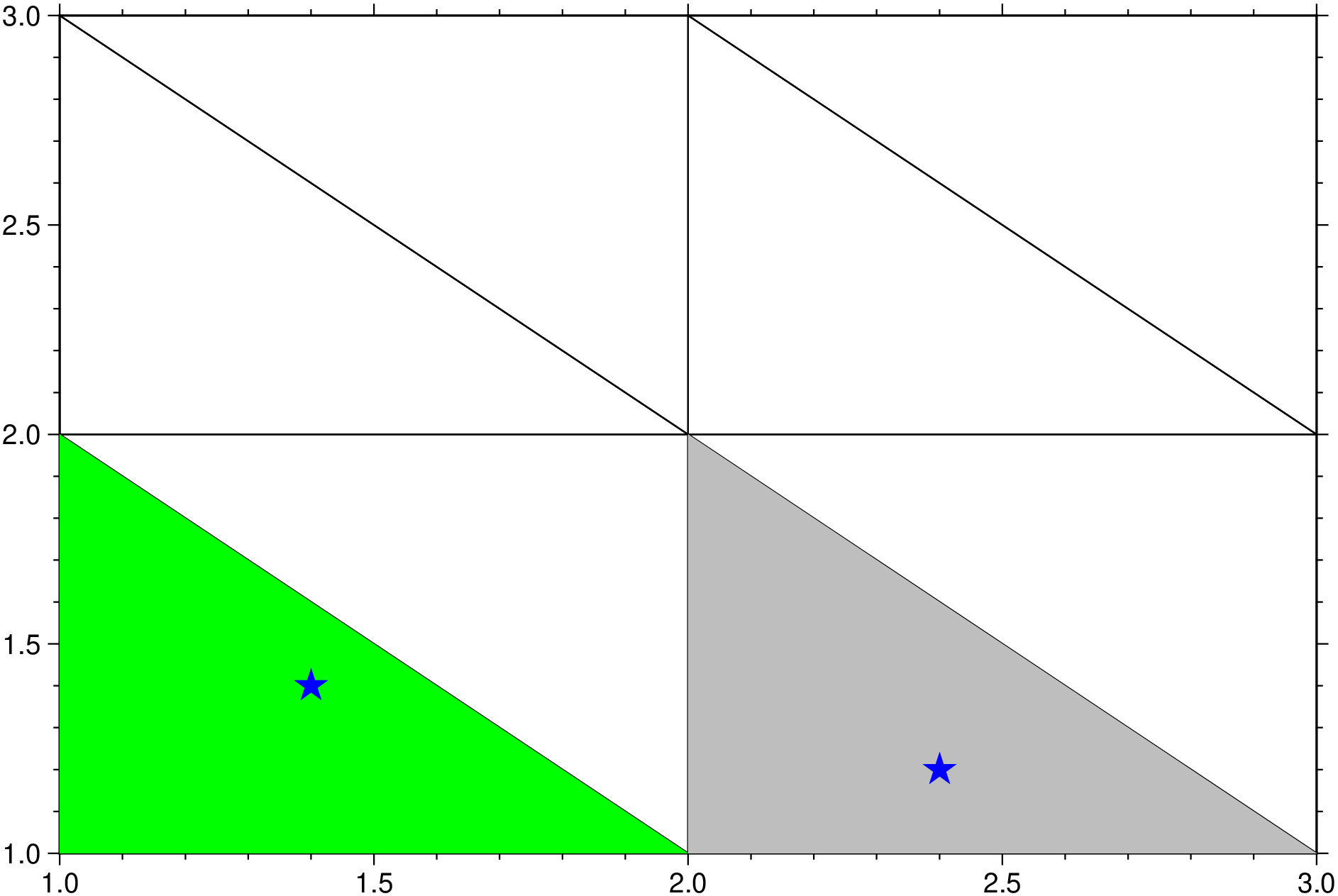inwhichpolygon
inwhichpolygon(D::Vector{GMTdataset}, point::Matrix{Real}; on_is_in=false)
or
inwhichpolygon(D::Vector{GMTdataset}, x, y; on_is_in=false)Finds the IDs of the polygons enclosing the query points in point. Each row in the matrix point contains the coordinates of a query point. Query points that don't fall in any polygon get an ID = 0. Returns either an Int or a Vector{Int} depending on the number of input query points.
D: A Vector of GMTdadaset defining the polygons.point: A Mx2 matrix or a two elements vector with the x and y point coordinates.x, y: Specifies the x-coordinates and y-coordinates of 2-D query points as separate vectors (or two scalars).on_is_in: Ifon_is_in=truethen points exactly on the border are considered inside. Default isfalse.
Examples
using GMT
pts = [[1 2 3;1 2 3;1 2 3][:] [1 1 1;2 2 2; 3 3 3][:]];
D = triplot(pts, noplot=true);
points = [2.4 1.2; 1.4 1.4];
ids = inwhichpolygon(points, D);
# Plot the triangulation and the query points.
plot(D)
plot!(D[ids[1]], fill=:grey)
plot!(D[ids[2]], fill=:green)
plot!(points, marker=:star, ms="12p", fill=:blue, show=true)See Also
inpolygon, getbyattrib, plot, triplot
© GMT.jl. Last modified: February 25, 2025. Website built with Franklin.jl and the Julia programming language.
These docs were autogenerated using GMT: v1.33.1
